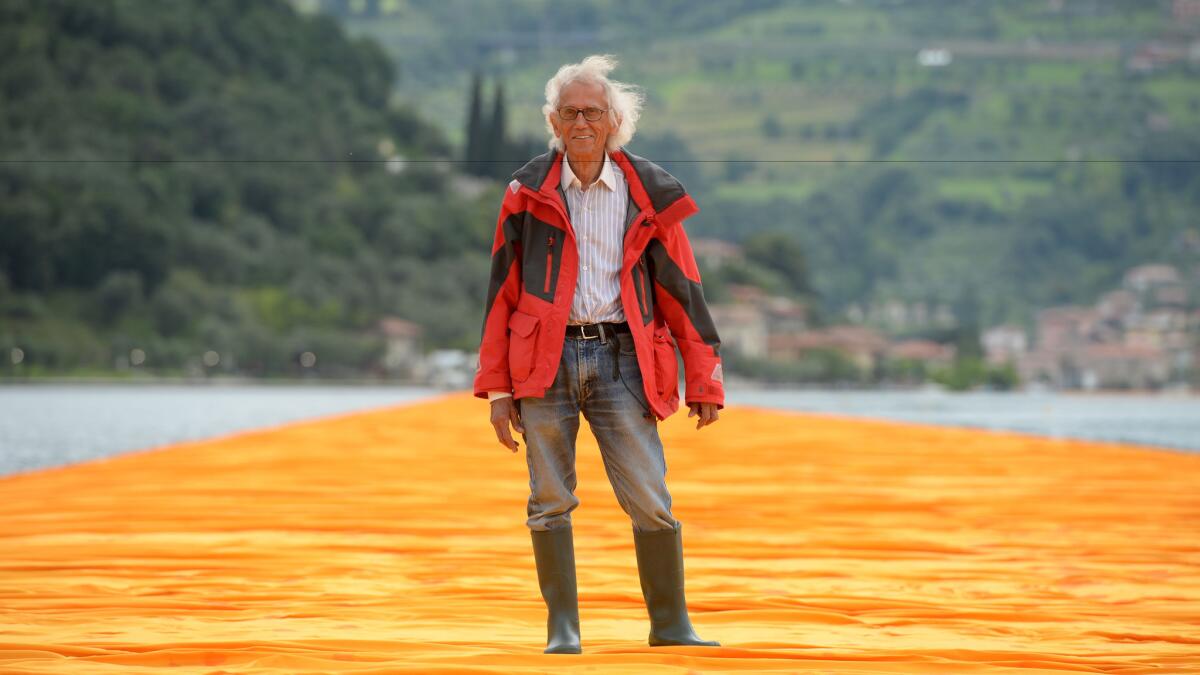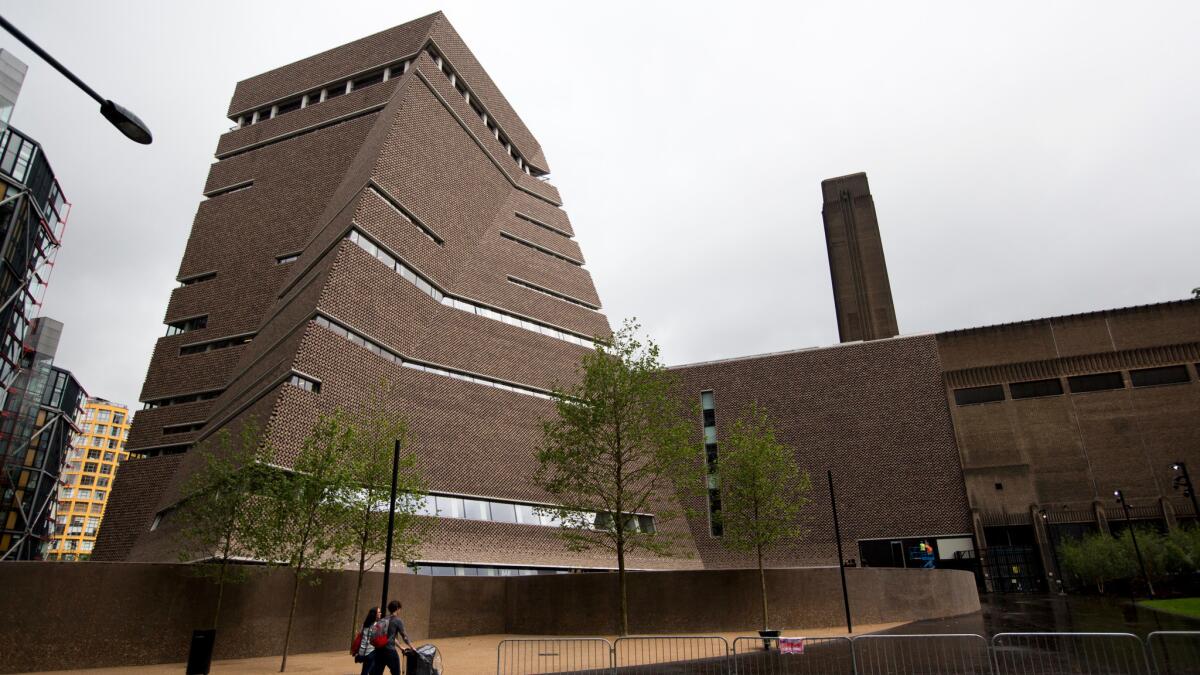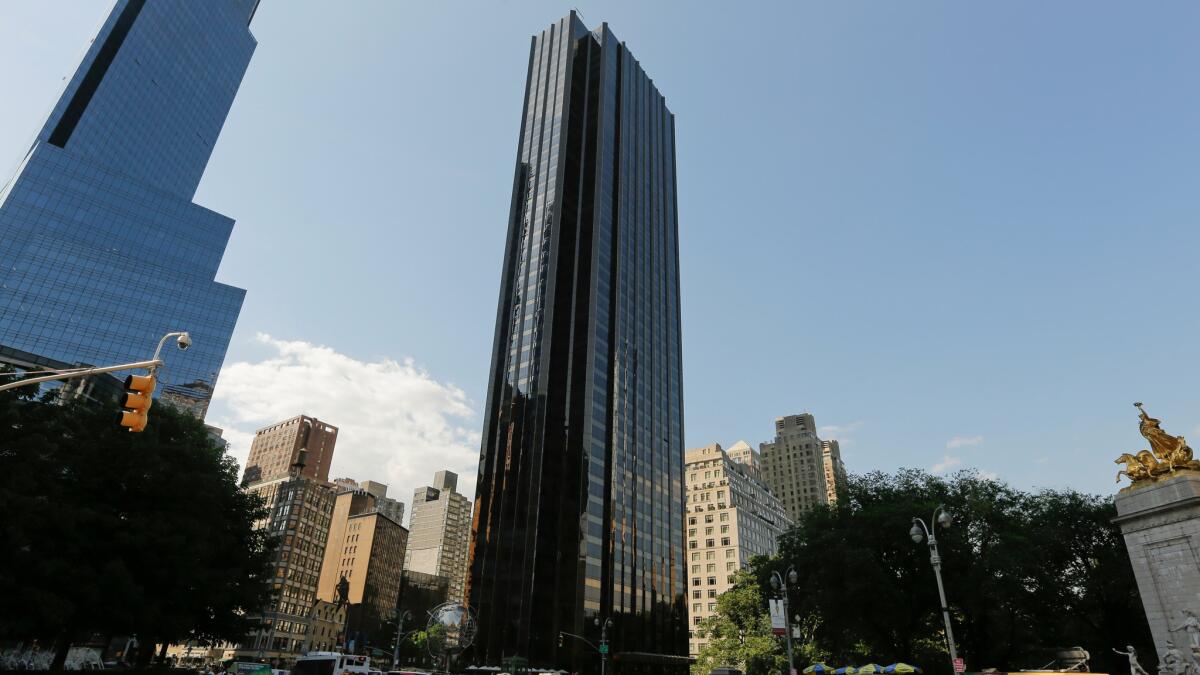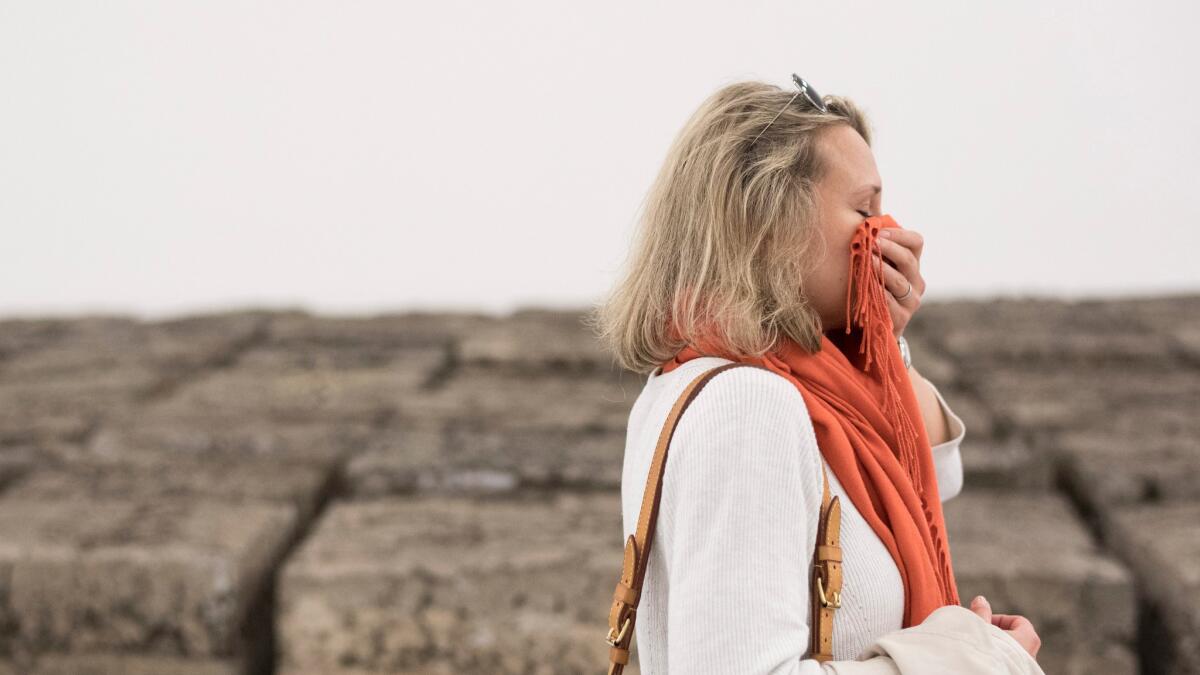Roundup: Christo’s new floating walkways, national parks vandal sentenced, poop sculptures in Europe

A woman who vandalized rock formations at Western national parks is sentenced. Frank Gehry’s Los Angeles River plans are revealed — sort of. A symbol of innovative architecture for a poor community in Africa collapses. Plus: Checking out the new wing at London’s Tate Modern, trying to save an important work of Mexican land art, and a Swiss biennial shows a load of poop.
I’m back from vacation and ready to pick through the art world’s detritus to make a liminal sculpture that’s all about hybridity. Here’s the Roundup:
— Casey Nocket, a 23-year-old San Diego woman, has been sentenced to two years of probation and 200 hours of community service for vandalizing rock formations and other natural features in seven national parks, including Yosemite.
— Christopher Hawthorne offers a peek at Frank Gehry’s low-key debut of his design analysis for the L.A. River. So far, it’s mostly research.

— The Tate Modern’s new Herzog & de Meuron extension has opened. The Guardian’s Laura Cumming has a look: “It is brick. It is a mountain, a fortification, a battleship, a Babel, a truncated and torsioned pyramid.”
— Two new museums in Japan tell opposing stories of the Fukushima nuclear disaster. (The New Inquiry)
— The Makoko Floating School, a contemporary symbol of architecture that responded to the needs of a water-based Nigerian community, has collapsed. (Weisslink)

— In Tampa, a planned toll road evocative of careless 1960s highway building, would slash through a minority neighborhood, in the process destroying low-income housing. (The New Inquiry)
— At the Venice Architecture Biennale, a historian revisits the architecture of Auschwitz. A moving piece.
— Art collector David Nahmad says that a famed Modigliani painting in his collection is not Nazi loot. Nahmad’s ownership of the work first came to light through the Panama Papers.
— A longtime film curator at New York’s Museum of Modern Art has been let go over the screening of a documentary about North Korea. Plus, three prominent figures to depart the Metropolitan Museum of Art as part of a voluntary buyout plan. Among the departures: The museum’s high-profile chief digital officer, Sree Sreenivasan.
— At Bryn Mawr, does a painting by Susan Macdowell Eakins hide a canvas by her husband, Thomas Eakins, underneath? One conservator’s quest.
— A battalion of global artists is fighting to preserve the scenic vistas around Espacio Escultórico (Sculptural Space), one of Mexico’s finest works of 20th century land art. The battle — against an unsightly tower being built by the country’s National Autonomous University — has been led by prominent Mexican artist Pedro Reyes and is being supported by the likes of blue chip figures such as British artist Anish Kapoor.
— How sound artist Alan Nakagawa will work with the Los Angeles Department of Transportation to help reduce traffic deaths.

— 7 infrastructure myths perpetuated by Donald Trump.
— United Talent Artists’ Fine Arts division has signed Chinese artist Ai Weiwei for a tentative documentary about the European refugee crisis.
— A new installation by Christo in Italy allows visitors to walk on water — or at least a brilliant yellow walkway that floats on water in Lake Iseo. Looks pretty rad.
— “Which is better art: a performative piece whose movements are informed by real-time Los Angeles traffic patterns, or plein air watercolors of delicate song birds done on a foggy morning?” Douglas Coupland on art and the universe in “What if there’s no next big thing?” (Weisslink)
— Which presents a perfect segue to Manifesta: The all-important European biennial, which has landed in Zurich on this go-around. The show features a sculpture that is built out of 176,000 pounds of human poop. Take it away, Adrian Searle. (For context: A helpful overview of art made with number two.)
— Why the Brontë sisters — Charlotte and Emily — are big in Japan.
— And last, but not least: An artist-created Japanese Trump commercial. Can’t get enough of this.
Find me on Twitter @cmonstah.
More to Read
The biggest entertainment stories
Get our big stories about Hollywood, film, television, music, arts, culture and more right in your inbox as soon as they publish.
You may occasionally receive promotional content from the Los Angeles Times.







